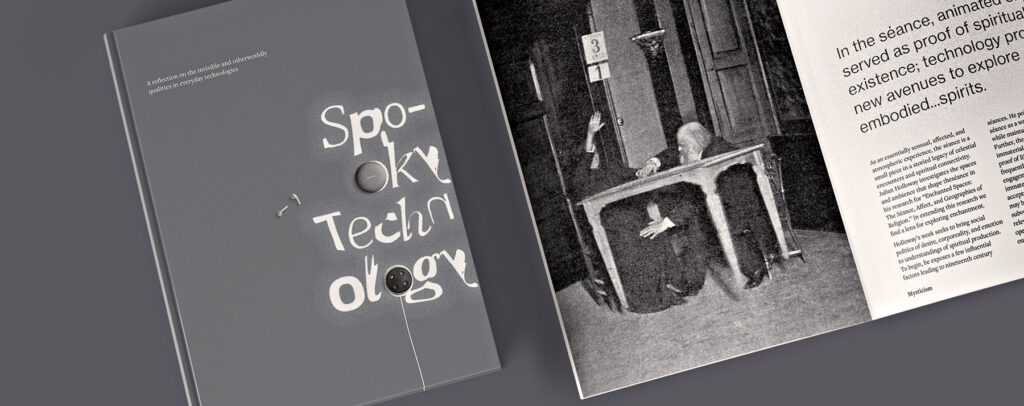
Daragh Byrne, Dan Lockton, Meijie Hu, Miranda Luong, Anuprita Ranade, Karen Escarcha, Katherine Giesa, Yiwei Huang, Catherine Yochum, Gordon Robertson, Lisa (Yip-Yan) Yeung, Matthew Cruz, Christi Danner, Elizabeth Wang.
Imaginaries Lab and Frank-Ratchye STUDIO for Creative Inquiry, 2021, 282pp. ISBN 978-0-9565421-5-1. Online (open-access) or in print.
We often hear that the technologies in our everyday lives would appear to be ‘magic’ and potentially terrifying to people in the past—instantaneous communication with people all over the world, access to a vast, ever-growing resource of human knowledge right there in the palm of our hand, objects with ‘intelligence’ that can sense and talk to us (and each other). But rarely are these ‘otherworldly’ dimensions of technologies explored in more detail. There is an often unspoken presumption that the march of progress will inevitably mean we all adopt new practices and incorporate new products and new ways of doing things into our lives—all cities will become smart cities; all homes will become smart homes. But these systems have become omnipresent without our necessarily understanding them.
They are not just black boxes, but invisible: entities in our homes and everyday lives which work through hidden flows of data, unknown agendas, imaginary clouds, mysterious sets of rules which we perhaps dismiss as ‘algorithms’ or even ‘AI’ without really understanding what that means. On some level, the superstitions and sense of wonder, and ways of relating to the unknown and the supernatural (deities, spirits, ghosts) which humanity has felt in every culture throughout history have not gone away. Instead, they have transferred and transmuted into new forms.
The Spooky Technology project focused on creating an inventory of ‘spooky technologies’ over the ‘COVID summer’ of 2020. To do this, we (a group of students and faculty from Carnegie Mellon) collected and reviewed work across art, design, and human-computer interaction research, both historically and more recently, along with forays into writings on the supernatural, myths, and superstitions. Our aim was to produce, collaboratively, a set of examples, from which we can extract possibilities, insights, and opportunities.
Edited by Daragh Byrne and Dan Lockton, and designed and written by Katherine Giesa, Meijie Hu, Miranda Luong, Anuprita Ranade, Yiwei Huang, Catherine Yochum, Matthew Cruz, Gordon Robertson, Lisa (Yip Yan) Yeung, Christi Danner, Elizabeth Wang, and Karen Escarcha, with support from the Frank-Ratchye Fund for Art at the Frontier, STUDIO for Creative Inquiry, and Carnegie Mellon’s College of Fine Arts.
